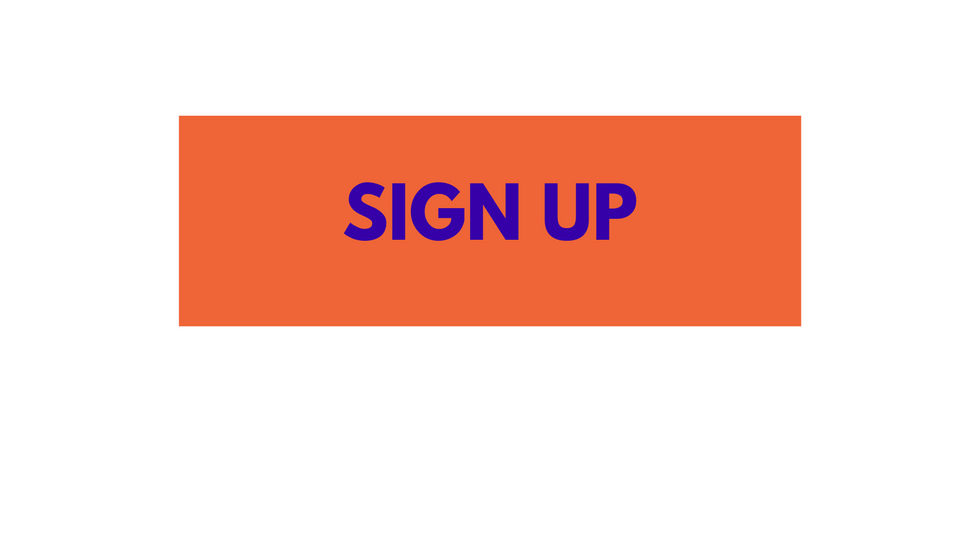
We live in an age where data is leveraged more than ever to make decisions. Yet many firms have an incomplete data strategy that prevents them from taking advantage of all available data to impact decisions. The solution lies in formulating a business-driven data strategy by answering some key questions.
Current data strategies focus on specific use cases, for example, regulatory compliance versus a holistic portfolio of requirements allowing firms to take full advantage of their data assets. This edition outlines five unanswered questions that help chief data analytics officers (CDAOs) get their data strategy over the line.
Defining The Problem…

CEOs have been demanding more organizational efficiency and effectiveness from CDAOs, struggling to meet the firm’s business needs, especially in value creation. CDAOs often meet challenges and obstacles, perceiving that data is not contributing the value and ROI that is believed possible. Currently, many CDAOs struggle to align the existing data approach to focus on corporate priorities by laying out a fine-tuned data strategy. Firms often skip many essential steps to creating a data strategy, favoring quick wins, charters, and pilots to show data team progress rather than creating a holistic and integrated vision and strategy for data. According to Insider Magazine, 82% of organizations are inhibited by data silos and aren’t taking advantage of the correct data for their business problems.* Practices many believed were in place and fully mature, such as creating one version of the truth or a 360 view of the customer, remain incomplete.
- Only a small percentage of organizations excel at delivering on their data strategy. In a recent MIT Technology Review, only 13% of organizations are considered “high achievers” at showing measurable business results from their data strategy. Issues such as data duplication, democratization, and processing data in real-time are just some of the gaps identified in the data strategy which need to be addressed.**
- Test and learn can help the firm learn faster and complete the data vision and strategy. Many CDAOs prefer to take an incremental approach to data strategy development. Randy Bean, in his new book Fail Fast, Learn Faster: Lessons in Data-Driven Leadership in an Age of Disruption, Big Data, and AI, provides some of the best case studies and perspectives on how firms can improve their approach to their data strategy.***
Answer 5 Questions To Advance Your Data Strategy

CDAOs need a new approach to formulating a business-driven data strategy. The five questions below provide a more holistic integrated approach when formulating a data strategy that ensures stakeholder buy-in and corporate priorities are accounted for. A collaborative approach for seeking input from the right stakeholders is best made through a blueprinting process and a road map. CDAOs must not skip such a process in favor of tactical quick wins or pressure from other execs to draw up the data strategy in a vacuum, for example, by the data team alone.
Answer the five questions by conducting a collaborative blueprinting process which is key to ensuring that business priorities and their requisite fit-for-purpose data can be harnessed for impact and monetization in the data strategy. Establishing the proper engagement and governance model for the blueprint is key to ensuring business partner needs and priorities are fully baked into the firm’s data strategy. The questions to be addressed and action steps are:
1. Undefined Business Problems: What Business Pain Points Need A Solution?

Without understanding business pain points, the data analytics team will be challenged to find the appropriate solutions to support business partners. Engage with partners to determine their strategic priorities via a blueprinting process. We have underestimated the value of stakeholder input (pain points and gap assessment) to help prioritize critical data initiatives based on business impact.
A collaborative process is established via the blueprint to seek stakeholder input. Define the stakeholders who should participate and actively engage in the blueprinting process. Define decision rights and roles in guiding the information into the strategy. Set the guiding principles and high-level work streams based on the vision and scope defined by the CDAO and sponsors.
Business problems are framed by looking at the current situation(s) and problems and gapping them to the future vision for data. This gap assessment helps the firm define and prioritize initiatives based on key success metrics. For example, one focus area for a data strategy is data latency (real-time versus batch) or the speed at which data gets updated, especially for digital customer experience. Marketing and digital are good starting points as they facilitate better customer experiences and broader enterprise applicability, such as for risk and CX. Customers searching for a product on the firm’s website provide digital signals and buying intent of the data and customer conversations. When captured in real time, signals are more likely to lead to sales. For example, the potential inclusion in the strategy of a real-time data application raises an issue for clarification: how much real-time data needs to be available via a modern data platform that may include streaming analytics among the tactical choices.
2. Data Coverage: What Data Is Needed To Solve The Business Needs, And Where Is That Data

The blueprinting process helps to create an inventory of the firm’s data sources and where that data is located. Depending on how data is used (and by whom), different platforms would be defined for housing the volume of identified data and the critical tools required. Other considerations include data quality, models, standardization, and consistency.
A data coverage map or inventory helps to identify not only what data is needed to solve the problems but also where that data is located and what it takes to access it. Depending on the use case, the firm can often decide if it wants to move all the data or be more laser-focused on what data it moves and stores. The firm needs to determine if the data needs to be moved to a data lake or accessed at the authoritative source. Some data might be included in the single source of truth (SST) and some in other applications.
Hiding behind our ability to take all the data into a big data platform and allegedly figure it all out later will not highlight when we can extract value from which data in what context. So, we may be engineering superstars; however, are we generating business value? In the initial phases of BI, we called this a dump and run where all the data was poured into a physical layer without being well organized or having a logical layer via a star schema or a data strategy. Sound familiar? The more you stay in a field the more you realize how some things change and some things stay the same and repeat or are rebranded in a more modern way with the same problem sets.
One of the questions which need to be answered is whether the firm needs a single source of truth (SST) versus multiple versions of the truth (MVT). This also begins to define what it means to adhere to the data strategy. For example, one strategic consideration: can any analyst take data directly from the source system, or do they go to the data lake?
3. Privacy And Information Security: Who Should Be Able To Access And Use Data

Define the number of unique identifiers within the data environment. Specify who has access to confidential and restricted information to comply with privacy regulations. Create highly secured data zones. Ensure algorithms are privacy protected. Define self-service tools for data access.
4. Data Analytics Organization And Partners: What Roles Are Needed?

Define the organization model for the data and analytics team and the roles and responsibilities of all stakeholders. In some organizations, there is a lack of role clarity and confusion over responsibilitiesâdata engineers report to business partners rather than the practice. Defining the organization and reporting structure adds transparency to the workflow and improves speed to impact. Define a talent architecture to increase the transparency of spans, layers, and job definitions.
5. Data Monetization: How Will The Business Leverage The Data

Data monetization is a process: you must design a use case and test plan with your business partners and execute and measure a pilot. Based on these inputs, you will build a business case including success metrics for the pilot, which should include a definition of done.
Blueprinting Your Way To A Successful Data Strategy

Arrive at a business-focused data strategy through a blueprint and a roadmap. The blueprint is needed to enable stakeholders to buy in and to correctly identify business problems to be solved, critical data, and the structure and deployment of data for maximum impact and lowest risk. It is not an academic exercise recommended by consultants and researchers if concrete execution steps via the roadmap and business case/ROI are part of the outcome. The CDAO must have the experience and gravitas to demand more investment upfront during the planning and resourcing phase.
Actualize your data strategy through a comprehensive blueprint that leads to a set of guiding principles for your data program and a business case for your CEO and board of directors.
- Formulating the Plan: The data strategy blueprinting phase helps to answer the five unanswered questions. Taking three to six months to engage business partners in an inclusive formulation of the data strategy can lead to increased support for data programs across the organization. This support from business partners will lead to faster adoption of data initiatives and remove roadblocks to initiatives like data governance going forward. Stakeholders’ buy-in leads to speed-to-maturity and achieving ROI and impacts outlined in the business case.
- Socializing the Strategy: Once the data strategy is endorsed and fit for the purpose, take it on a roadshow through the organization. Host summits, lunch and learns, and other innovative vehicles such as webinars, gamification, and new learning methods to socialize the data strategy. Time spent bringing the stakeholders along the journey by sharing what was agreed to in the data strategy can go a long way in engendering trust and cooperation along the implementation journey.
- Future Proofing Your Strategy: To ensure that your data strategy stays relevant to deliver next-generation data analytics capabilities, it is imperative that the strategy be revisited on an ongoing basis but at a minimum once a year. Data strategy review sessions should occur in the data committee or data governance committee, where progress can be discussed with senior management and calibration to best practices appear. This check-in ensures you have a living, breathing dynamic strategy that delivers desired impacts and uplifts maturity.
In conclusion, by answering these five questions, your data strategy will support your organization’s growth efforts and value creation. Further, these answers help CDAOs set the priorities and scope of work during the implementation phase, including standing up for data governance and management. A collaborative blueprint ensures stakeholder buy-in and a fit-for-purpose, business-aligned, winning data strategy.
Reference List:
* Insider Magazine. Why Your Data Strategy Probably Needs an Overhaul. (2022, August 9)
** Denis McCauley. MIT Technology Review: Insights report. (August 2022)
*** Randy Bean. Fail Fast, Learn Faster: Lessons in Data-Driven Leadership in an Age of Disruption, Big Data, and AI (August 31; Wiley)



























































